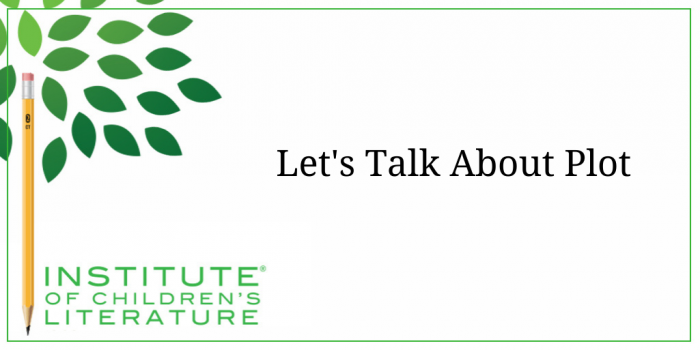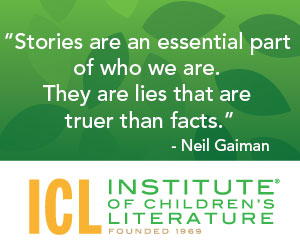1000 N. West Street #1200, Wilmington, DE 19801
© 2024 Direct Learning Systems, Inc. All rights reserved.

Many writers struggle with plot.
New writers struggle with plot.
Even published writers can struggle with plot.
In fiction, plot is the form that story assumes. Some folks confuse plot and theme. And some folks confuse plot and premise. Some even confuse plot and character. And that’s understandable because the elements of story aren’t really as compartmentalized as we might like.
Plot functions because of character needs and desires. Plot explores theme. Plot takes place in premise. So all these elements mix and blend when we think about plot. Thus, confusion is understandable.
Plot is the way the story happens. Plot is how Winnie the Pooh got himself stuck in Rabbit’s doorway and eventually was freed. Plot is how we get from “Once upon a time” to “they lived happily ever after.” Plot is how Trixie lost her Knuffle Bunny and how she got it back. It is the specific journey taken in a book to get from the beginning where everything is status quo and through the catastrophic to the end where something has been changed and we know the characters will be living with that change.

Plot is exactly how the journey happened in the story. And if you have skills and imagination, your plot will not be exactly like anyone else’s, nor will it be just like any other story you’ve written. This second part is quite important because it’s really easy to fall in love with a plot and just keep telling that story over and over.
Say, you write a story about a superhero who lives in a city where there is a super villain. And that super villain can turn dark emotion into evil villainy. So one of the superhero’s friends gets really furious with her and the super villain uses that to turn the friend into a monster. Which the superhero must defeat without harming her friend (and make up for the fight they had). So she does. And you love the story. And all your readers love the story. So in the next story, you have the superhero’s mom get hurt feelings and the super villain turns the mom into a monster because of her hurt feelings. And the superhero now has to defeat the mom monster without hurting her (and make up for hurting her mom’s feelings).
Do you see the problem here?
You’ve told the same story twice. And if the next time it’s her brother or a teacher or the school librarian, it’s still going to be the same story because it’s the same journey. If you’d like to see how this works in action, just catch the first few seasons of The Miraculous Ladybug on Netflix. In the series, every episode follows the exact same plot journey even though the characters change and the theme changes.
Let’s use our superhero plot example to boil down what plot is. We will start with a main character (which is probably best if you’re fairly new to writing, but if you decide to use more than one main character, do try to avoid hopping from one character’s viewpoint to another character’s viewpoint too often). A single main character gives your plot more focus and helps readers become attached to the character.
So, let’s suppose you have a character with good and bad qualities (because this makes the character feel more real as we are all a mix of good and bad qualities). The character is interesting in some way. In our superhero plot, she’s interesting because she’s a superhero. But she must also be interesting for something more. So she is an incredible seamstress (which I’ve often thought must be a useful quality in a superhero as those outfits tend to show some impressive tailoring) and socially awkward. (Okay, aren’t we all at some point? But that has become almost a cliche in main characters. Where are all the socially successful main characters who haven’t been made evil by popularity?) And the characters actions and decisions drive the action of the story. This is essential. A character that bobs along on the actions of others tends not to be so interesting.
Not every plot has to be a tale of vicious misery. In fact, none of the plots I’ve ever written and few of the plots I enjoy reading are tales of misery. But you do have to complicate your main character’s life. In our superhero plot, she and her best friend clearly must have some sort of fight if her best friend ends up furious. So even before the evil villain steps in, the main character’s life has become complicated. She has a problem. At some point when you’re working on your plot (and potentially at several points if you’re writing a longer short story or a novel) you should be able to look at a spot and say, “my main character has a problem.” The problem needs to be one that applies pressure to act.
The concept of “pressure to act” is an important one in plotting. The character’s actions grow out of pressure that cannot be ignored. Having a huge fight with your best friend will apply pressure to act. No one wants to be on the outs with a best friend, and if you feel that you’ve completely destroyed the relationship, you’re not going to shrug something like that off. You’re going to do things that are driven by that problem. You might not do the right things, but you’re going to be driven to act. If the actions of your characters aren’t being driven by the conflicts
The bigger the problem, the more pressure a character will feel to act. And the more likely the character is to choose an action that maybe makes things worse. So a character who has just had an argument with her best friend might try to fix it too quickly, while the friend is still really mad. And that attempt might drive the character from anger to fury. And in our superhero story, this gives an opening to the super villain who turns the friend into a monster.
This upping of the problem is a common function of plot. The character has a problem, so what might she logically do that will unintentionally make it worse? And how might circumstances (in this case, a handy evil villain) do to make things even worse than it already is? Worsening problems are another aspect of plot. Nothing should be too easy. And the new, worsened problem will make it even less likely that the main character can simply walk away. Something must be done. [And of course you know that something catastrophic to a toddler might be shrug-worthy to a teen, so you need to tailor your problem accordingly.]
One thing some plots fail to do is consider human nature. Say you’ve gone into a haunted house. You’re not really expecting a monster in there. Not really. You’re really expecting the place to be creepy and for you to have an adventure you can tell friends about. But along comes the monster. So what do you logically do? Do you stay and try to defeat the monster? Or do you run very fast with a determination never to go back into that house again? Humans run. It’s basic survival. So if you intend to make a character do something that doesn’t fit normal human nature, you have to give the main character a reason to stay. A reason that we believe. Now, a really naturally brave and really loyal person might stay until she can get her friend out with her. Maybe. But why not simply run outside and call for help on your ubiquitous cell phone? Would you really stay? Really?
So the best friend probably isn’t enough. And you really do have to keep in mind that real people have real life choices, like the cell phone. If you’re going to keep the person in the house, you’re going to have to deal with the phone. And with the motivation. Traditionally, escape has been blocked by the house itself, or the person maybe stays because the secondary character is someone they flatly could not leave behind (a little sister, maybe). But whatever you do in the story, the choices you make must grow logically out of the circumstances. Don’t make a choice because it is convenient for you if it ignores what a real life person would do in that situation.
Sometimes the thing that makes the main character the weakest or most vulnerable or gets the main character in trouble in the first place is the thing that saves the day. Say your main character is being punished for taking the classroom clock apart to see how it worked. Your character is made to stay behind during recess and follows another naughty kid on an adventure where they end up locked in a closet. When you reach the worst moment of the story, where the main character absolutely must get them out of there, what do you do? You have a character with a long history of tinkering and taking things apart. So he knows how hinges work and gets them out of the closet. Or he takes apart the door handle. Or you find another way to use that initial weakness as a strength, because that’s often how plot works. Weaknesses can be strengths depending on the situation and the way you look at them.
Now once you’ve solved the problems (big and small) you have to get out of the story. So the superhero keeps her friend from destroying the city and restores her to being a normal kid again, possibly by calling upon their friendship somehow? Or by using the thing they fought about in the first place. So now you just have two kids again who end the story by doing something symbolic to affirm their friendship (ice cream maybe?) And you’re done.
You must resist the urge to go on and on once there are no more problems. An ending that is clever or witty is always nice too. Gives a nice bit of pizzazz but the real key is to make sure it’s satisfying. You do that by revealing (a subtly as you’re able) that things have been changed by the story. The friendship is now on stronger ground than ever before or some such. Some kind of change because story is all about change. You don’t end up back exactly where you began. It might look as if you do at first glance, but upon reflection you realize the story did change the characters.
So that’s plot. It’s a journey to change. It’s one dang thing after another. It’s ruining someone’s life and bringing them to wholeness through it. It’s an adventure. So good luck on yours.
With over 100 books in publication, Jan Fields writes both chapter books for children and mystery novels for adults. She’s also known for a variety of experiences teaching writing, from one session SCBWI events to lengthier Highlights Foundation workshops to these blog posts for the Institute of Children’s Literature. As a former ICL instructor, Jan enjoys equipping writers for success in whatever way she can.
1000 N. West Street #1200, Wilmington, DE 19801
© 2024 Direct Learning Systems, Inc. All rights reserved.
1000 N. West Street #1200, Wilmington, DE 19801
© 2024 Direct Learning Systems, Inc. All rights reserved.
1000 N. West Street #1200, Wilmington, DE 19801
© 2024 Direct Learning Systems, Inc. All rights reserved.
1000 N. West Street #1200, Wilmington, DE 19801
© 2025 Direct Learning Systems, Inc. All rights reserved.
1000 N. West Street #1200, Wilmington, DE 19801
©2025 Direct Learning Systems, Inc. All rights reserved. Privacy Policy.